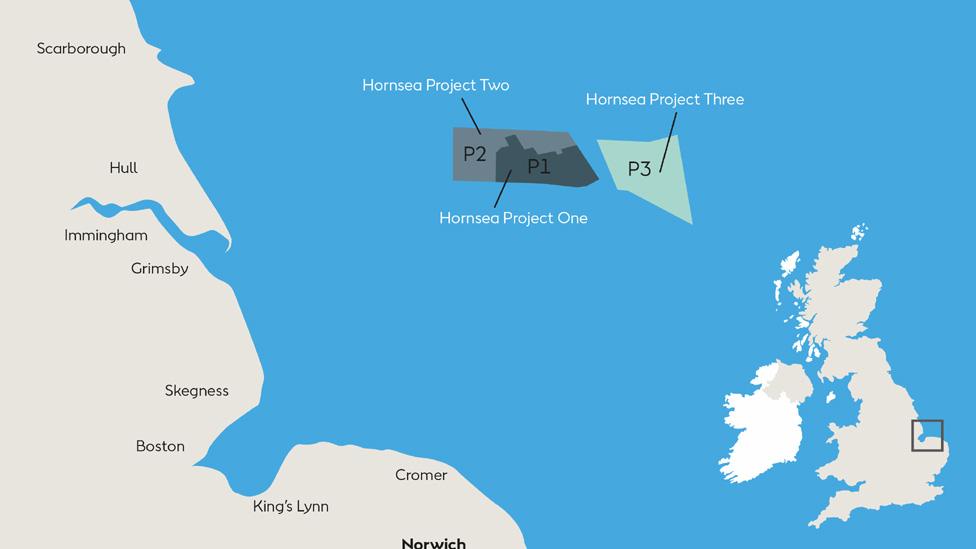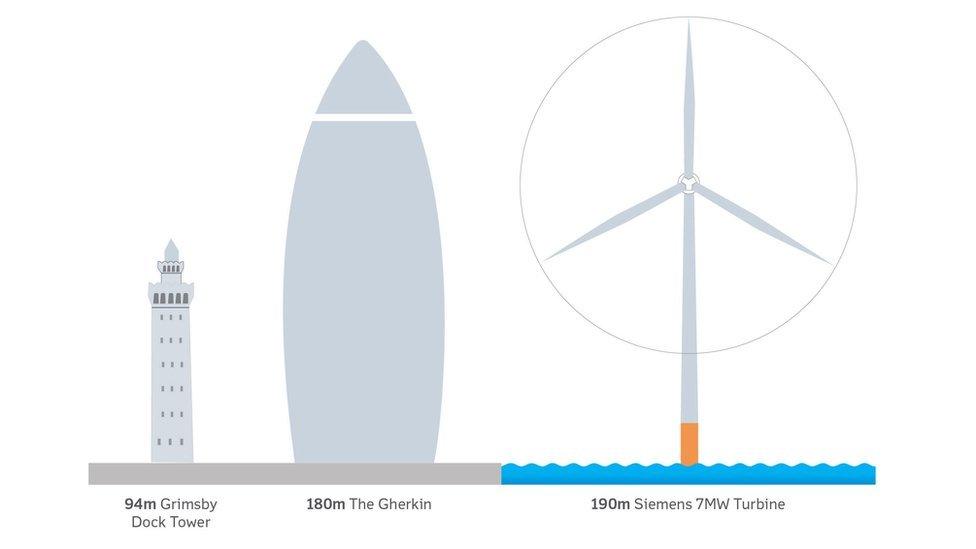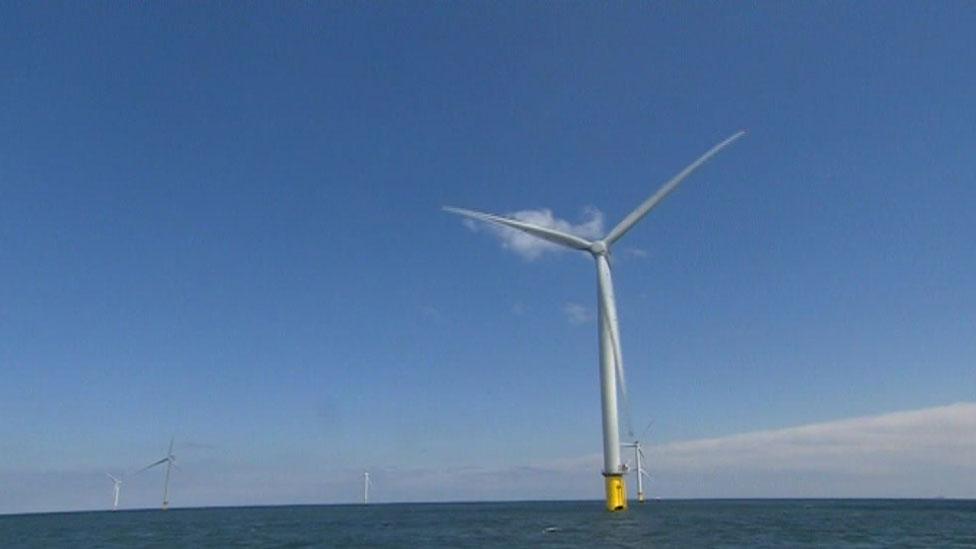First power from world's biggest offshore wind farm
- Published

The first 190m high turbine has started producing electricity for the National Grid
Electricity has been produced for the first time at what will be the world's biggest offshore wind farm.
The first turbine at the Hornsea One development located 75 miles (120km) off the Yorkshire coast started generating power on Friday.
Each of its 174 turbines will measure 623 feet (190m) high and are being made at the Siemens factory in Hull.
When fully operational in 2020, it will produce enough energy for more than a million homes.
Matthew Wright, UK managing director of Danish developer Ørsted, described the installation of the first turbine as "a globally significant milestone".
"Ten years ago, the thought of a project of this size was just a dream," he said.
"But thanks to continued innovation, a determined effort from both the industry and supply chain to drive down costs, and the natural geographical benefits that surround us, the UK has positioned itself as a world-leader in offshore wind."

The wind farm is located 75 miles (120 km) off the East Yorkshire coast
The 157 sq mile (407 sq km) development is the first of three proposed wind farms in the area. Work has already started on the adjacent Hornsea Two project.
Construction started on the first development in 2018 and the Hornsea One site covers an area the size of more than 58,000 football pitches.
Most of the foundations to hold the giant blades have been installed and all of the turbines, which can each produce seven megawatts of power, will be fitted by the end of the summer.

Each of the turbines are taller than the Gherkin building in London
The electricity generated by the turbines will pass via undersea cables through one of three massive offshore substations.
The cable comes ashore at Horshore Point in Lincolnshire. From there it passes through an underground cable to a sub station in North Killingholme where it connects to the UK National Grid.
- Published8 February 2018

- Published12 September 2017

- Published1 December 2016

- Published16 August 2016

- Published4 May 2016

- Published3 February 2016
